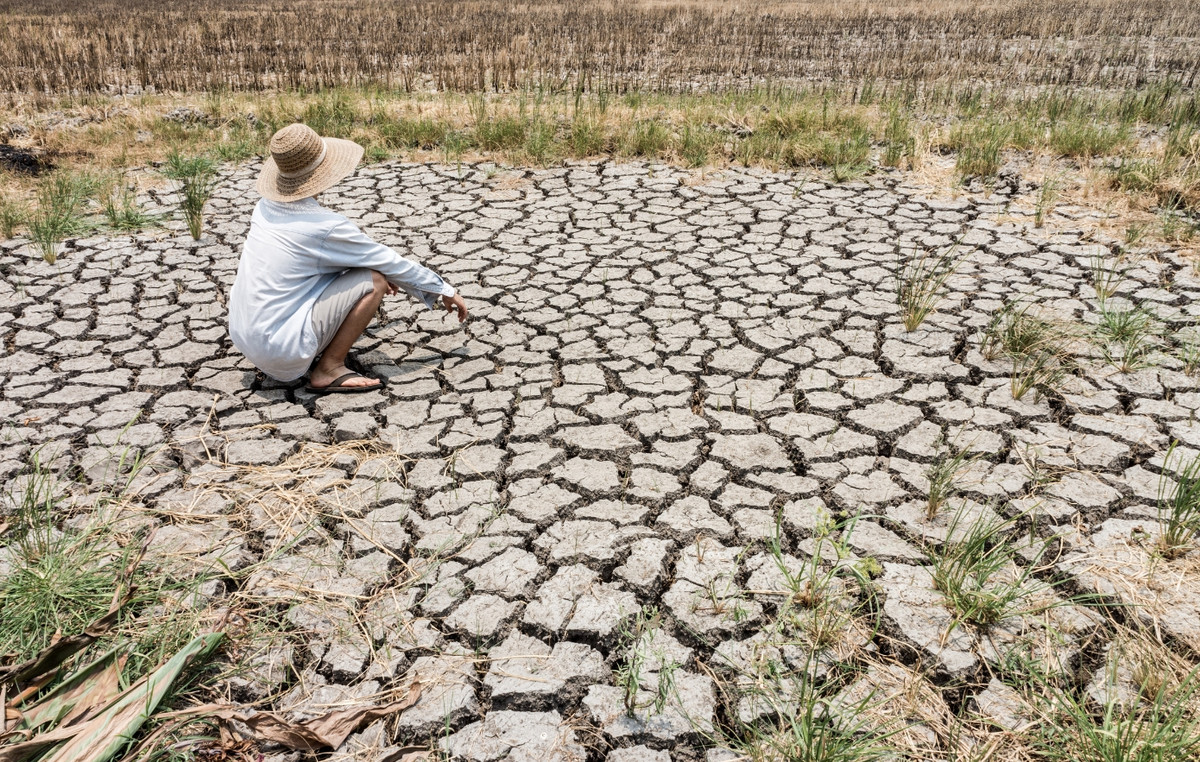With the growth of the population, urbanization and agro -industrial activity, the global use of freshwater should increase 55% by 2050. The projection of scholars is that this skill of demand will strongly impact a scenario already characterized by scarcity and uneven distribution of water resources, the privatization of an essential good that should be public domain and the deterioration of water quality, especially in developing countries.
Forced migrations, social tensions and military conflicts arising from the water deficit aggravate this dark picture. And this is not a possible future, but something that is already happening now. Between 1970-2000 there was a 10% increase in global migration related to lack of water. And, according to a report Published by the United Nations Education, Science and Culture Organization (UNESCO) in 2024, 2.2 billion people lived at the time without access to safe drinking water safely. And since 2022, approximately half of the world’s population has experienced severe water shortage for at least part of the year, while a room has faced “extremely high” levels of water stress.
In this context, Frontiers in Water magazine published a dossier Gathering five articles on the subject, entitled Emerging Water Contaminants in Development Countries: Detection, Monitoring, and Impact of Xenobiotics (emerging water contaminants in developing countries: detection, monitoring and impact of xenobiotics).
Geonildo Rodrigo Disner, researcher at the Butantan Institute and member of the Center for Toxins, Imune Response and Cell Signaling (Cetics)-a FAPESP Research, Innovation and Diffusion Center (CEPID)-was co-editor and main author of the Dossier Presentation Editorial.
“In addition to conventional contaminants, such as fecal coliforms, whose presence is related to the low sewage treatment rate, freshwater of developing countries is increasingly impacted by a new category of pollutants: emerging contaminants. These include fuel additives, plastic or non -stick materials, medicines, medicines [como antibióticos, analgésicos e hormônios]hygiene and cosmetics products, ”reports Disner.
Although not necessarily new, these compounds have been detected in previously not registered concentrations and environments, generating increasing concern. This is the case of diuron herbicides, used mainly in sugarcane and cotton crops; Glyphosate, used mainly in soy and corn crops; Atrazine, used mainly in corn and sorghum crops; and 2,4-D, used to control wide sheet plants in pastures and crops.
“Because they are not removed by conventional water treatment methods, these pollutants accumulate in aquatic ecosystems and may cause toxic effects, including extremely low concentrations. Many act as endocrine deregulators, with impacts on reproduction and organism development-effects that can extend to human health. Exposure is generally chronic, continuous and silent. They biocumulate along the food chain, which further increases health risks, ”says Disner.
The researcher recalls that everything ends in the water. Water is the final receptacle of most pollutants, including those released on the ground or air. In addition, water is a transport vehicle, which carries contaminants even to regions where they have never been used.
“Despite the risks, most emerging contaminants are not yet regularly monitored, nor regulated by specific legislation. In general, treatment systems remove only coarse materials, such as suspension particles, part of organic matter and microorganisms. Even in the city of São Paulo, where we have a relatively more developed structure, all 27 tested pesticides were detected by the water quality surveillance information system [Sisagua] in the monitored waters. We live in a region with enormous pressure on water resources and the treatment we have is still limited, ”says Disner.
Given this situation, the articles gathered in the dossier exploit recent challenges and advances in identifying, monitoring and impacting emerging contaminants in low and medium rent countries. One of the papers, written by Sri Lanka researchers, investigates the presence of heavy metals in groundwater and locally cultivated rice, associating exposure to the high incidence of chronic kidney disease. Another study, by Bangladesh, analyzes the quality of the bottled water sold commercially, revealing arsenic contamination and pathogenic microorganisms. In Brazil, a work by researchers from the Paulista State University (UNESP) evaluates the toxic effects of diuron and its metabolites in unlucky fish, an animal model used in ecotoxicological studies.
In addition to contaminants, the researcher draws attention to a broader structural problem: inequality in water access and the already observable effects of climate change. “The big floods, as we have recently seen in Rio Grande do Sul, compromise the entire structure of drinking water capture and distribution. On the other hand, there are regions that are facing severe droughts. Between 2002 and 2021, droughts affected more than 1.4 billion people,” he says.
Water dispute is already a reality in some parts of the world and tends to intensify in the coming decades. The UNESCO report reports that while approximately 40% of the world’s population lives in transfronist river basins and lacustristers, only one fifth of countries have transionic agreements to jointly manage these resources in a equitable way. Many cross -border basins are located in areas marked by current or past international tensions.
“Water is becoming a geostrategic resource. And the privatization of water sources can turn this good into a control currency and power. We are used to talking about the oil dispute, but the water dispute may be even more fierce. Water needs to be treated as a right. And it is not just access but also quality. Ensuring quality drinking water is a duty of the state,” Disneris.
The authors of the dossier emphasize that prevention at the source, the principle of precaution and the remediation of contaminated areas are essential strategies to contain the entry of pollutants in aquatic ecosystems. They also advocate the creation of regulatory frameworks and monitoring programs specifically focused on emerging contaminants, with the aim of protecting human and environmental health, contributing to the achievement of the Global United Nations Sustainable Development Goals (UN).
This content was originally published in emerging pollutants aggravate water crisis in developing countries on CNN Brazil.
Source: CNN Brasil
Charles Grill is a tech-savvy writer with over 3 years of experience in the field. He writes on a variety of technology-related topics and has a strong focus on the latest advancements in the industry. He is connected with several online news websites and is currently contributing to a technology-focused platform.







